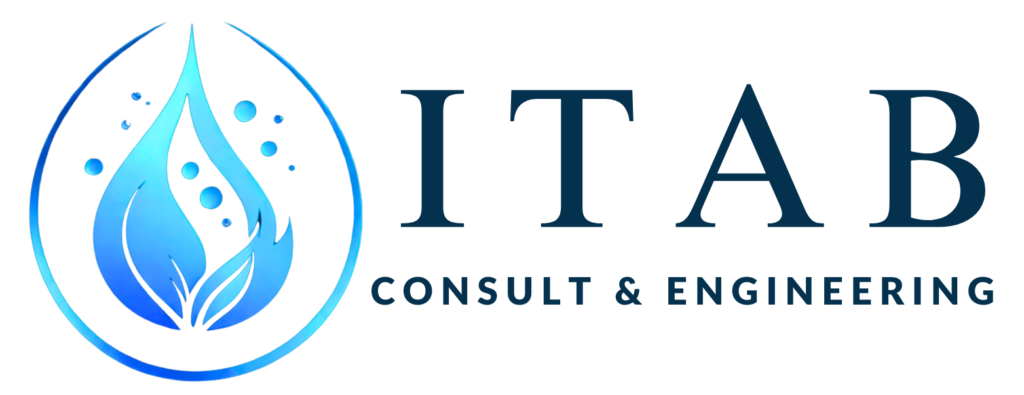A CIO’s Blueprint for Government Digital Transformation
By Tweterane Isaac
Introduction
In an era where citizens demand efficient, transparent, and secure digital services, public sector IT departments must evolve from back-office support functions into strategic enablers of governance. Unlike the private sector, government CIOs face unique challenges, tight budgets, legacy systems, complex regulations, and the obligation to serve every citizen, including those in last-mile communities. Drawing on my experience at UEDCL, National Identification and Registration Authority (NIRA) and Kabale University, I offer this blueprint for building agile, secure, and citizen-centric public sector IT teams.
1. Align IT Strategy with National Development Goals
A future-ready IT department must directly support national priorities, from digital inclusion and anti-corruption to the Sustainable Development Goals (SDGs).
CIOs should:
Map IT initiatives to policy objectives
For example NIRA can enhance its digital ID system by improving its integration with healthcare, education, telecom, and financial platforms, ensuring inclusive access to essential services in line with Uganda Vision 2040’s goal of a digitally empowered society.
Adopt interoperable standards
For example NIRA can enhance interoperable standards by adopting secure data exchange frameworks that enable real-time identity verification across key MDAs such as the Ministry of Health (patient records), Uganda Revenue Authority (taxpayer registration), Ministry of Education (student enrollment), and Uganda Bureau of Statistics (UBOS) for accurate population data and national planning. By leveraging APIs and standardized protocols, NIRA can reduce duplication, improve data integrity, and streamline service delivery. For instance, integration with UBOS ensures consistent demographic data, while linking with the Electoral Commission and mobile financial services supports inclusive governance and financial access, advancing Uganda Vision 2040’s goal of a digitally integrated public sector.
Prioritize citizen impact
MDAs need to measure performance by speed, accessibility, and user satisfaction, not just technical uptime.
For example MDAs like NIRA and UEDCL can prioritize citizen impact by focusing on service accessibility, speed, and satisfaction, not just technical uptime. NIRA can improve ID registration turnaround times, offer mobile registration units in remote areas, and provide real-time status tracking for all use cases through digital platforms. Similarly, UEDCL can enhance customer experience by providing quick fault identification and response channels. Both institutions can regularly gather citizen feedback and publish quality of service performance metrics, ensuring transparency and continuous improvement. These efforts directly support Uganda Vision 2040’s emphasis on efficient, people-centered public service delivery.
2. Modernize Infrastructure, Without Breaking the Budget
Many governments operate on legacy systems, but total replacements are often unrealistic. Instead, pragmatic, cost-effective steps should be taken.
CIOs should:
Adopt hybrid cloud models
Host non-sensitive workloads in the cloud while keeping critical data on-premises.
Use APIs to revitalize legacy systems
Wrap aging infrastructure in APIs to enable digital access (e.g., online land record searches).
Share services across institutions
Pool resources like data centers, cybersecurity teams, and procurement frameworks.
3. Secure Critical Systems Against Rising Cyber Threats
Governments are prime targets for cyberattacks. A secure-by-design approach is non-negotiable. In recent years, Uganda has witnessed a significant escalation in cyber threats targeting its critical infrastructure, underscoring the urgent need for robust cybersecurity measures. A notable incident occurred in November 2024 when the Bank of Uganda suffered a cyberattack by a group known as “Waste,” resulting in unauthorized transfers amounting to approximately $16.8 million to accounts in Japan and the UK. This breach exposed vulnerabilities within the nation’s financial systems and prompted investigations by the Criminal Investigations Directorate and the Auditor General.
Additionally, in February 2024, Uganda’s major telecommunications providers; Airtel, MTN, and Uganda Telecom, were targeted by Distributed Denial of Service (DDoS) attacks. These attacks disrupted core services and highlighted the susceptibility of essential communication infrastructure to cyber threats.
These incidents serve as stark reminders of the evolving cyber threat landscape in Uganda. They emphasize the necessity for government agencies and organizations to adopt comprehensive cybersecurity strategies, including implementing Zero Trust architectures, enhancing staff training, and fostering inter-agency collaboration. Such measures are vital to safeguarding national assets and ensuring the resilience of Uganda’s digital infrastructure in alignment with the country’s Vision 2040 objectives.
Key strategies:
Implement a Zero Trust Security Architecture
Every user, device, and application must be continuously authenticated and authorized. Ensure users only access data necessary for their role; especially in sensitive areas like citizen records or financial data. Separate network zones (e.g., HR, finance, public services) to limit lateral movement during an attack.
Strengthen Cybersecurity Awareness and Capacity
Conduct mandatory cyber hygiene training for all government staff, especially those handling financial or citizen data. Establish incident response teams (CSIRTs) in each MDA, linked to NITA-U’s National CERT for real-time threat intelligence and coordinated response. Include cybersecurity in performance KPIs for IT officers and departmental heads.
Deploy Robust Technical Controls
Intrusion Detection & Prevention Systems (IDPS): Monitor networks for suspicious behavior (especially relevant after the DDoS attacks on telecoms). Data Loss Prevention (DLP): Prevent sensitive data from leaving the organization through unauthorized channels. Regular patching and vulnerability management: Ensure all systems are updated, including legacy platforms still in operation. Example: Ministry of Finance systems integrated with Bank of Uganda should use real-time anomaly detection to flag large, unusual transfers, like the $16.8M incident.
Establish Disaster Recovery and Continuity Plans
All MDAs should maintain tested disaster recovery and backup systems, preferably stored in secure off-site or cloud-based environments. Run annual cybersecurity drills simulating ransomware attacks, data breaches, or telecom outages.
Foster Cross-Government and Private Sector Collaboration
Promote inter-agency threat sharing, coordinated through NITA-U and the Ministry of ICT. Partner with private sector telecoms, financial institutions, and ISPs to jointly secure national digital infrastructure.
4. Drive Innovation Within Bureaucratic Constraints
Public sector innovation isn’t about chasing trends, it’s about practical problem-solving.
Approaches that work:
Partner with local tech ecosystems
Collaborate with universities and startups to develop affordable, scalable tools.
Pilot, then scale
Test emerging tech (e.g., IoT for utilities, blockchain for land titles) in controlled environments before national rollout.
Promote open data initiatives
Make anonymized datasets publicly accessible to spark civic tech solutions.
5. Build Public Trust Through Transparency
Even the most advanced system fails without citizen trust. CIOs must ensure government tech is accessible, ethical, and inclusive.
To build trust:
Communicate with clarity.
Use plain language to explain data use (e.g., “Your ID photo helps verify pensions, not for surveillance.”)
Reach every citizen.
Use low-tech channels like USSD codes, radio, and SMS alongside mobile apps.
Share performance metrics.
Proactively publish system uptime, registration backlogs, and breach response timelines.
6. Establish a Cybersecurity-Driven IT Staffing Structure
A future-ready public sector IT department must be built on a workforce that is structured, skilled, and strategically aligned to modern cybersecurity and digital service delivery needs. To effectively secure critical systems and support resilient transformation, MDAs should establish a staffing framework that balances leadership, operations, compliance, and user support.
Some of the roles may include, but are not limited to:
Chief Information Security Officer (CISO) / Information Security Focal Point
To lead the institutional cybersecurity strategy, ensure compliance with national frameworks, and advise leadership on digital risk management.
IT Security Manager / Data Protection Lead
Supervises the implementation of cybersecurity controls, coordinates technical teams, and oversees incident response and recovery planning.
Senior Cybersecurity Officer
Provides technical leadership in network security, threat monitoring, incident response, compliance auditing, and data protection across systems.
Cybersecurity Officer
Handles day-to-day security operations, including system monitoring, endpoint protection, vulnerability scanning, and basic user support.
Cybersecurity Awareness & Training Officer
Designs and delivers staff training programs on cybersecurity best practices to reduce risks related to human error and social engineering.
Conclusion: The CIO’s Public Mandate
To future-proof government IT, leaders must:
✅ Be policy-aware; Align tech initiatives with national goals
✅ Modernize pragmatically; Balance innovation with fiscal responsibility
✅ Defend citizen data; Make cybersecurity a public trust issue
✅ Innovate for impact; Pilot, partner, and scale what works
✅ Operate transparently; Build trust through open communication
The future of public service depends on technology that works for everyone, not just the digitally savvy. As CIOs, we aim to ensure no citizen is left behind in the digital age.
Partner with ITAB Consult & Engineering Ltd – Your Gateway to a Smarter, Sustainable Public Sector
Whether you’re looking to streamline your IT operations, go green with renewable energy, or modernize public utilities, our team of experts is here to help you build systems that are resilient, efficient, and future-ready.
How is your government agency preparing for the digital decade?





